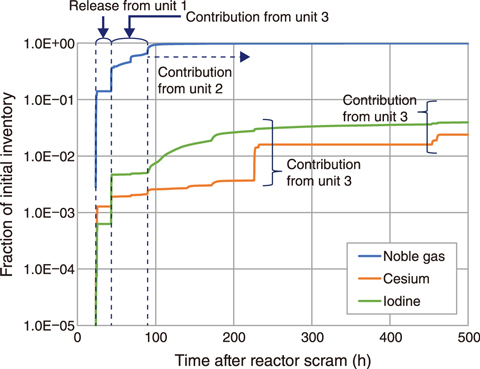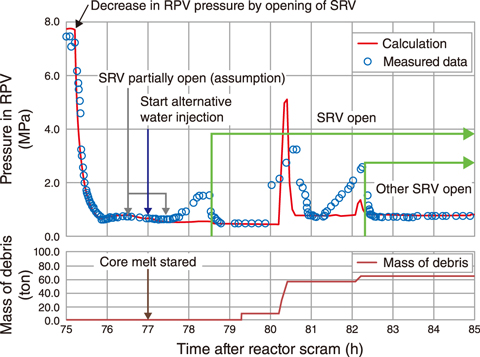
Fig.1-16 Calculated release of major FPs to the environment

Fig.1-17 Consideration of the cause of observed pressure peaks in RPV of unit 2
The Organization for Economic Co-operation and Development/Nuclear Energy Agency (OECD/NEA) “Benchmark Study of the Accident at the TEPCO’s Fukushima Daiichi NPS (1F)” (BSAF) project was conducted from 2012 to 2018. One of the objectives of this project is to estimate the status of the reactor pressure vessel (RPV) and containment vessel (CV), the fission product (FP) transfer behavior in the plant, and the source term, which refers to the physical/chemical form and amount of FP released into the environment for the first three weeks, using integral severe accident codes. The participating organizations analyzed the accident progression using common boundary conditions and some assumptions needed for the reproduction of the measured data. Aggregating the analysis results from participants allowed the most plausible accident scenario occurred at 1F to be examined.
JAEA conducted analyses of units 1, 2, and 3 using the THALES2/KICHE code developed at JAEA. The calculated total noble gas, cesium, and iodine released into the environment as a fraction of the total initial inventory in the core at the accident is shown in Fig.1-16. For example, a source term analysis of unit 1 assuming vacuum breaker failure was performed to reproduce the high dose rates observed around a pipe equipped with a vacuum breaker and at the base of the stack. This could arise from the leakage of gas with FPs through the failed vacuum breaker from the drywell (DW) to the wetwell (WW) without scrubbing by water. The analysis of unit 2 focused on the observed three pressure peaks in the RPV 76 hours after the reactor scram, as they seemed to be correlated with the increase in the air dose rate monitored outside 1F. The analysis results over the period of the three peaks are shown in Fig.1-17. Through these long-term analyses based on the measured data, the stability of the code was improved and analytical models for some accident countermeasures were introduced.
In this project, a reasonable consensus for accident progression was reached among participants. For example, regarding unit 1, it was agreed that water injection from outside the CV was performed to cool the core because the equipped cooling systems did not work, however water did not reach the core in the early stage of the accident. Another example of consensus was that the molten fuel was nearly ejected out of the RPV. However, some uncertainties remain, such as the core degradation and relocation model in RPV, the molten core–concrete interaction model, and the remobilization model of FP deposits on the structure’s surfaces for long-term analysis. To overcome these issues and to more fully understand the accident progression, We continues to participate in and manage the successive project of the OECD/NEA study “Analysis of Information from Reactor Buildings and CV of 1F” (ARC-F) as the operating agent.
(Hitoshi Tamaki)